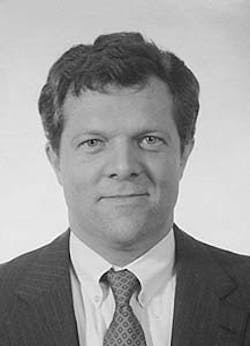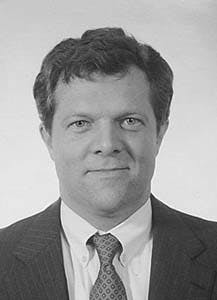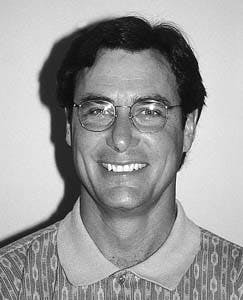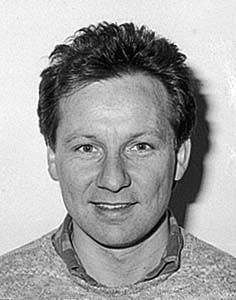Drill bit benchmarking improves drilling performance
L.A. "Harvey" Brown Jr.
Hughes Christensen Co.
D.S. Stoltz
ARCO Alaska Inc.
D.G. NimsA practical method for standardizing drill bit selection reduced drilling costs by $5.5 million on the North Slope of Alaska. Shared Services Drilling (SSD), a consortium of BP Exploration Alaska and ARCO Alaska Inc., developed a benchmarking system that improved drilling performance across the Prudhoe Bay Unit (PBU). The process involved input from drill bit manufacturers, rig crews, and the operator.
BP Exploration Alaska
Well configurations
SSD is responsible for all rotary drilling activity in the PBU, North America's largest field. Over the past 5 years, three to five rigs have operated continuously in the unit, and more than 55 horizontal development and sidetrack wells are drilled annually. Well designs have evolved from conventional vertical and horizontal configurations to more complex slim and ultra-slim holes. As geologic targets became smaller and harder to reach, well profiles changed dramatically. Medium-radius, short-radius, multilateral, microdrill, through-tubing, and extended-reach configuration are now common.Bit standardization
In relation to the total cost of a well, bit costs are a minor expense. However, bit performance has a high impact on final well economics. Therefore, optimizing bit performance is critical to lowering field development costs. Before the institution of benchmarks, the reasons for selecting one bit over another varied from rig to rig. Bit selection was a by-product of "opinion engineering," meaning each rig crew had its own theory concerning which bit was best suited for a particular operation. This led to substandard bit runs and created inventory problems.Benchmarking Strategy
Unfortunately, no two wells operate under identical conditions. This makes appraisal difficult. The relation of well inclination to formation dip, differences in rig types, experience levels of the drilling crews, and the variety of BHA configurations add complexities that are difficult to normalize. Fortunately, the variety of drilling techniques and divergence of bit selections benefited the appraisal because a wide range of situations and products could be analyzed. In order to establish benchmarks, SSD embarked on an interval-by-interval comparison of bit performance using information from bit records enhanced with true vertical depth data.Strategy
The benchmarking strategy consisted of six phases: 1. Identify area for application (horizontal section, tangential, vertical section). 2. Nominate bits for each area of application. 3. Test each nomination through the drilling process. 4. Analyze bit performance. 5. Select standard bit. 6. Perform benchmark. Before identifying the areas of application, all variables, including hole size, formation, and directional profile, were itemized and prioritized in order of importance. This assured the process would be completed within a reasonable time frame. The initial objective was to ensure that only appropriate bits were tested for each area of application. To this end, three to four bits were nominated by the bit companies or rig teams. Manufacturers were given the opportunity to identify specific bit applications which they felt held a competitive advantage. Rig crews provided input based on experience and preference. Benchmarks were then defined by comparing product performance for each formation.This comparison forced all parties to concentrate on performance rather than relationship issues. This summarily reduced the number of qualified bits. Fig. 1 [52131 bytes] shows a condensed version of the bit selector guide with the appropriate IADC code. Not shown is a sixth column with information concerning operating parameters and hydraulic configurations that could also enhance performance.
Benchmark methodology
The goal for drilling optimization is to reduce the cost-per-foot drilled. Unfortunately, this base criteria is not always the best way to judge performance for directional applications. In many cases, the well profile will have more of an effect on the cost-per-foot than the bit type, and different methodologies for each type of hole section is needed to determine which bit is best. By defining what constitutes good and marginal performance, the operator can determine within two or three runs if a new bit will meet or exceed the benchmarks.Directional sections
For example, Bit A, worth $6,000, drills 1,500 ft of true vertical formation at a 40° inclination. Meanwhile, Bit B, also worth $6,000, drills the same 1,500 ft vertical interval at an inclination of 60°. Although Bit A achieved penetration rates of 216 ft/hr (Table 1) [16565 bytes], and Bit B only 167 ft/hr, Bit B achieved a lower cost-per-foot at the end of the interval (Table 1). The cost-per-foot in this case was affected more by the total footage required to drill the respective inclinations, rather than the rate of penetration (ROP). Bit reliability was not always a dominant factor, especially in less demanding intervals. For instance, if every bit within the IADC classification was capable of effectively drilling an interval, with negligible differences in bit prices, then rate of penetration (ROP) would become the performance indicator. It is unreliable to use measured depth (MD) to compare bit runs in directional wells; except in cases where there are identical profiles within the same formation. Unfortunately, performance data are not always segmented by formation. Therefore, true vertical depth (TVD) becomes the next best alternative. If all beds within an interval are constant, then TVD can be used without reference to formations.Tangential section
For sections with slight angle building and tangential sections, ROP vs. TVD becomes the performance indicator. ROP vs. TVD plots are prepared for all competing bit types judged to be suitable for each hole section (Fig. 2) [24043 bytes]. As shown, there are wide differences in performance, making it a fairly simple proposition to choose standard bits. However, if the scatter plots do not distinguish one bit over another, it is necessary to use other criteria. For example, motors, flow rates, and directional profiles may be used to distinguish performance. If the drill bits exhibit similar performance and do not differ in costs, the individual rig teams should maintain authority over the bit selection process.Horizontal section
For horizontal sections, the desired objective is footage drilled (Fig. 3)[29849 bytes]. However, the wide disparity between bit design and cost makes the cost-per-foot (CPF) indicator the deciding factor.CPF is a function of footage drilled, bit cost, rate of penetration, and trip cost. Over time, this methodology leads to common-sense guidelines for horizontal sections. For example, if the interval is short, standard bits are acceptable. Conversely, intervals between 700 ft and 1,000 ft stipulate designs with extra-gauge protection and/or enhanced bearing packages. Extended horizontal intervals often require polycrystalline diamond compact (PDC) bits. Otherwise, two roller-cone bits may be needed.
Establishing benchmarks
A procedure for comparing bit performance explains why benchmarking is important. Through this procedure, all participating companies have a method to test their hypotheses against actual performance. Fig. 4 [25850 bytes] shows the relationships of ROP vs. TVD, comparing the bit runs of five rigs. Every rig except Rig D achieved a drilling record as shown by the line labeled "deeper, faster." Of course, if a single rig achieved all of the best bit runs, optimizing drilling performance would be a simple matter of imitating the drilling practices employed on that rig. Because this is not the case, efforts are continually under way to better explain the scatter of the runs. Defining a benchmark is a matter of plotting bit performance, then drawing a benchmark line through the above-average runs for each particular bit (Fig. 5) [25334 bytes]. The line and surrounding envelope show the performance that the benchmarked bit is expected to achieve.Areal bit performance
A surface-location correlation was found which segmented bit runs into three groups across the PBU. According to performance indicators, the best drilling performance was located in the western-most portion of the unit. Because drilling performance was geographically distributed across the unit within identifiable areas, it became important to code drill bits according to their surface location. Using different performance benchmarks within the various areas of the PBU ensured that the variable down-hole environments were addressed satisfactorily.Challenging the benchmark
A procedure was instituted by SSD to ensure that nonbenchmarked bits were given an opportunity to compete against benchmarked bits. During the conventional process, "favored" bits were preferentially used in easier hole sections, and thus were protected against competing in more challenging hole sections. However, if nonbenchmarked bits were not tested in the equivalent hole sections against bits with established performance records, they may never have the opportunity to exhibit their potential. Historically, bit runs were considered adequate or marginal, depending on the down-hole environment, the hydraulic regimes, or the driller's experience. Prescribed guidelines for challenging bit performance removes most uncertainties concerning external factors. There are seven questions concerning the viability of a benchmark challenge in which a drilling engineer must consider before accepting a challenge: 1. Does a benchmark correlation exist for the area of application? 2. Is the test hole similar to other wells from which the benchmark was generated? 3. What is the performance record of the challenger bit? 4. Will the challenger bit conduct a quality test? 5. Are there any other tests planned for this well which will prove more valuable to the operator? 6.Does the bit company understand the expectations for the area of application? 7. Is there added-value in testing the bit? These questions are included in a "Non-Benchmark Sign-Off Sheet," which all parties must complete and approve before the initiation of a test. In order to maintain the controlled nature of the challenge, only one variable (the bit) is allowed to be changed. For instance, a new downhole motor will not be run at the same time as the challenger bit. This would alter the controlled conditions of the test and make the test results invalid. The same guideline applies to introducing other variables, including bottom hole assemblies and mud systems.
PDC challenge
It is often the case that a single PDC bit may be more cost-effective than running two or more roller-cone bits. This is because additional bit trips and down time offset the higher cost of a PDC bit. Also, in many cases, a PDC bit has higher rates of penetration (ROP) than a roller-cone bit. Challenging multiple roller-cone bits with a single PDC bit is a three-step process: 1. Plot the expected benchmark performances for each roller-cone bit, similar to the scatter plot in Fig. 5. 2. Calculate the cost-per-foot and break-even point required for the PDC bit (Table 2). 3. Determine whether the PDC bit will drill fast enough to be economically viable. Because benchmarks establish expected performance levels for roller-cone bits, it is a simple proposition to generate a break-even ROP for their PDC counterparts. Performance benchmark plots are used to determine the expected roller-cone ROP for each interval. From this, it is possible to calculate the expected cost-per-foot and the break-even ROP for the PDC bit. It then becomes a matter of comparing performance parameters for both roller-cone bit runs in relation to the PDC bit, and justifying if the subject PDC bit will be economically viable (Table 2).Results
Fig. 6 [32624] illustrates how the benchmarking process has increased performance for horizontal wells in the Prudhoe Bay Unit. What was considered good performance 4 years ago, is only average performance today. Although the procedure centers on horizontal wells, performance was also improved for directional wells. Prior to standardization, 6-11 bit trips were generally required to drill a 9,500-12,000 ft, nonhorizontal well. Over the past 3 years, the same measured depth is drilled with 4-7 bit trips. Cost savings were calculated for elimination of bit trips, including both horizontal and nonhorizontal well profiles. Every bit trip eliminated saves $20,000-$30,000. Before benchmarking, 12 bit trips or less occurred 23% of the time for horizontal wells. However, over the past 3 years, 12 bit trips or less occurred 61% of the time. For nonhorizontal wells, six trips or less occur 55% of the time, as opposed to 24% prior to benchmarking performance. Over the past 3 years, trip-related cost savings for both horizontal and nonhorizontal wells achieved savings of $2.75 million each, for a total of $5.5 million.The Authors
L.A. "Harvey" Brown, Jr., is a senior applications engineer for Hughes Christensen Co. in the Woodlands, Tex. From July 1993 to September 1996, he was a bit application engineer assigned to Shared Services Drilling, Anchorage, Alaska. Brown joined Hughes Christensen in 1979 immediately upon receiving a BS in mechanical engineering from Texas A&M University. He previously served as a field engineer in West Texas and Asia. He is a member of SPE.
Dan S. Stoltz is a senior drilling engineer with ARCO Alaska Inc. and is presently assigned to ARCO and BP Shared Services drilling department. In 1986, he received a BS degree in petroleum engineering from the Montana College of Mineral Science and Technology. Stoltz is a member of SPE.
David G. Nims has served as the Prudhoe Bay field drilling superintendent for the Shared Services Drilling division of ARCO and BP, Anchorage, since August 1994. Nims graduated from Glasgow College of Science and Technology in 1974, prior to a career in drilling operations with Shell, Britoil, and BP in Europe and the Far East.
Copyright 1997 Oil & Gas Journal. All Rights Reserved.



